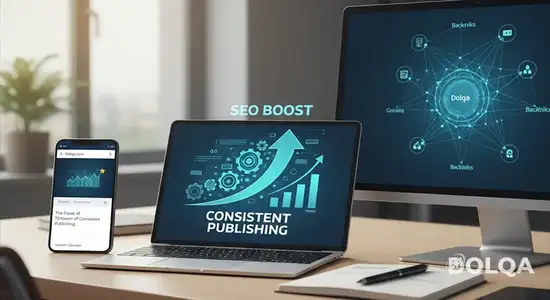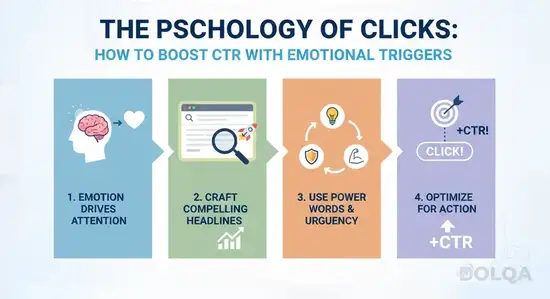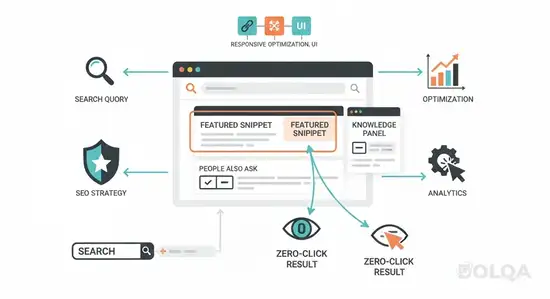
Introduction: The AI-Powered Search Revolution
The landscape of search engine optimization has undergone a seismic transformation. As we navigate through 2025, Google's integration of artificial intelligence into its core ranking algorithms represents the most significant paradigm shift in SEO since the introduction of mobile-first indexing. The emergence of Search Generative Experience (SGE), advanced natural language processing models, and machine learning-driven ranking factors have fundamentally altered how websites compete for visibility.
For SEO professionals and digital marketers, understanding AI SEO isn't optional—it's the cornerstone of any effective Google ranking optimization strategy. This comprehensive guide explores the advanced technical frameworks, algorithmic considerations, and implementation strategies necessary to dominate Google search in this AI-driven era. Whether you're optimizing enterprise-level sites or specialized content platforms, these SEO strategies 2025 will provide the competitive edge required in today's sophisticated search ecosystem.
Understanding Google's AI-Powered Ranking Architecture
The Evolution of RankBrain and Neural Matching
Google's AI infrastructure has evolved far beyond the initial RankBrain deployment. The current ranking architecture leverages multiple neural network systems operating in parallel, each evaluating different dimensions of relevance, quality, and user experience. Understanding these systems is critical for implementing effective search engine optimization trends.
Key AI Components in Google's 2025 Algorithm:
- Multi-Task Unified Model (MUM): Processes queries across 75 languages simultaneously, understanding nuanced contextual relationships between concepts
- BERT Evolution: Enhanced bidirectional transformers now evaluate semantic coherence at the document level, not just sentence level
- Neural Passage Ranking: Independently ranks specific passages within long-form content, rewarding comprehensive topical coverage
- Entity-Relationship Graphs: Maps connections between concepts, brands, and topics to establish topical authority
Vector Search and Semantic Embeddings
The transition from keyword-centric to vector-based search represents perhaps the most profound technical shift. Google now generates high-dimensional vector embeddings for both queries and documents, measuring semantic similarity in continuous vector space rather than discrete keyword matching.
Technical implications for optimization:
- Semantic density optimization: Content must demonstrate conceptual depth across related subtopics within a primary domain
- Entity salience scoring: Strategic placement and contextual reinforcement of key entities throughout content architecture
- Latent semantic indexing 2.0: Advanced co-occurrence patterns that extend beyond traditional LSI to neural semantic relationships
Advanced Technical SEO Foundations for AI-Era Rankings
Core Web Vitals: Performance Metrics That Define Rankings
Google's emphasis on Core Web Vitals has intensified, with AI systems now capable of predicting user experience quality based on performance patterns across millions of similar pages.
Critical Performance Thresholds for 2025:
- Largest Contentful Paint (LCP): Target < 1.8 seconds for competitive advantage
- Interaction to Next Paint (INP): Must achieve < 150ms for optimal ranking signals
- Cumulative Layout Shift (CLS): Maintain < 0.05 for premium user experience scoring
- Time to First Byte (TTFB): Server response optimization critical at < 400ms
Advanced optimization techniques:
- Implement edge computing with CDN distribution for sub-100ms global response times
- Deploy predictive prefetching using machine learning to anticipate user navigation patterns
- Utilize resource hints (preconnect, prefetch, preload) strategically based on critical rendering path analysis
- Implement adaptive serving that adjusts resource delivery based on device capabilities and network conditions
Schema Markup and Structured Data Sophistication
The role of structured data has evolved from optional enhancement to fundamental ranking signal. Google's AI systems utilize schema markup to build comprehensive knowledge graphs and establish entity relationships.
Essential Schema Types for 2025 Dominance:
- Organization Schema: Establishes brand entity recognition and authority attribution
- Article Schema with Speakable Markup: Optimizes content for voice search and SGE inclusion
- How-To and FAQ Schema: Captures featured snippet opportunities and AI-generated answer sources
- Product Schema with Detailed Attributes: Essential for e-commerce visibility in AI-powered shopping experiences
- Event Schema with Temporal Data: Critical for time-sensitive content and local search optimization
Advanced implementation strategies:
Implement nested schema hierarchies that map complex entity relationships. For instance, an article should include Author schema linked to Organization schema, with ReviewRating schema connecting to AggregateRating for comprehensive entity graph construction. Validate implementations using Google's Rich Results Test and Schema Markup Validator, ensuring proper parsing by AI systems.
Content Optimization for AI Search Generative Experience
Creating SGE-Optimized Content Architecture
Google's Search Generative Experience fundamentally changes how content must be structured. AI-generated overviews prioritize content that demonstrates clear, authoritative answers while maintaining comprehensive topical coverage.
SGE Content Framework:
- Primary Query Resolution: Address the core query within the first 150 words using direct, declarative language
- Contextual Depth Layers: Provide graduated detail levels—overview, intermediate explanation, expert-level analysis
- Comparative Analysis Integration: Include natural comparisons between concepts, methodologies, or solutions
- Temporal Context: Integrate current data, trends, and future projections to demonstrate freshness
- Multi-Modal Content Elements: Combine text, structured data, images, and video for comprehensive topical signals
Topical Authority and Content Clustering
AI SEO demands sophisticated content clustering strategies that demonstrate comprehensive domain expertise. Google's neural ranking systems evaluate topical authority by analyzing the breadth and depth of content across related subtopics.
Building Topical Authority Clusters:
- Pillar Content Architecture: Create comprehensive cornerstone content (3,000+ words) covering primary topics with exhaustive detail
- Supporting Cluster Content: Develop 15-20 related pieces addressing specific subtopics, each 1,500-2,500 words
- Internal Linking Topology: Implement hub-and-spoke linking structures with contextual anchor text reinforcing semantic relationships
- Entity Co-occurrence Optimization: Ensure related entities appear together throughout content clusters to reinforce topical relevance
Advanced clustering techniques:
Utilize topic modeling algorithms (LDA, NMF) to identify content gaps within your topical domain. Analyze competitor content clusters using tools like Ahrefs Content Gap or SEMrush Topic Research, then develop differentiated content that provides unique value propositions while maintaining comprehensive topical coverage.
AI-Powered Keyword Research and Intent Mapping
Beyond Traditional Keyword Analysis
Traditional keyword research methodologies are insufficient for AI SEO success. Google's neural understanding of query intent requires sophisticated analysis of semantic relationships, contextual variations, and user journey patterns.
Advanced Keyword Intelligence Framework:
- Query Intent Taxonomy: Map keywords across informational, navigational, commercial investigation, and transactional intent stages
- Semantic Keyword Clustering: Group keywords by semantic similarity rather than simple lexical matching
- Question-Based Query Mapping: Identify and target question-based queries that feed AI-generated overviews
- Long-Tail Semantic Variations: Capture natural language variations that align with conversational AI search patterns
Natural Language Processing for Content Optimization
Leverage NLP techniques to analyze and optimize content for AI ranking systems:
NLP Optimization Strategies:
- Entity Extraction and Optimization: Identify primary and secondary entities, ensuring proper density and contextual reinforcement
- Sentiment Analysis: Maintain appropriate sentiment tone matching user intent (educational, commercial, problem-solving)
- Readability Scoring: Target Flesch-Kincaid scores appropriate for audience sophistication while maintaining accessibility
- Lexical Diversity Analysis: Achieve optimal keyword variation (30-40% variation) while maintaining semantic coherence
Technical implementation:
Deploy Python libraries such as spaCy or NLTK for entity recognition and sentiment analysis. Use tools like Clearscope or MarketMuse for semantic optimization scoring. Implement Google's Natural Language API for entity salience scoring and sentiment analysis that aligns with Google's own AI evaluation frameworks.
Technical Link Building in the AI Era
Authority Flow and Link Graph Optimization
Google's AI systems evaluate link authority through sophisticated graph neural networks that analyze the entire link ecosystem, not just individual links. Understanding how authority flows through link networks is essential for effective Google ranking optimization.
Advanced Link Acquisition Strategies:
- Topical Relevance Scoring: Prioritize links from sites with high topical overlap using vector similarity analysis
- Entity Co-citation Networks: Build links from sites that reference related entities within your topical domain
- Authority Cascade Optimization: Acquire links from high-authority hubs that distribute PageRank effectively through their link graphs
- Link Velocity Patterns: Maintain natural link acquisition patterns that mirror organic growth trajectories
Digital PR and Brand Entity Signals
AI ranking systems increasingly weight brand entity signals derived from unlinked mentions, co-citations, and brand search patterns. This represents a fundamental shift toward holistic brand authority evaluation.
Building Brand Entity Authority:
- Unlinked Brand Mention Cultivation: Generate media coverage and content references that mention your brand without direct links
- Co-citation Relationship Building: Ensure your brand appears alongside recognized authorities in your industry across diverse content sources
- Brand Search Volume Optimization: Drive branded search queries through PR, content marketing, and thought leadership
- Entity Knowledge Panel Optimization: Complete and optimize Google Knowledge Graph entity information through structured data and authoritative sources
Voice Search and Conversational AI Optimization
Optimizing for Natural Language Queries
With voice-activated AI assistants processing over 50% of searches in 2025, optimization for conversational queries is no longer peripheral—it's central to comprehensive search engine optimization trends.
Voice Search Optimization Framework:
- Question-Answer Content Structures: Format content to directly answer who, what, where, when, why, and how questions
- Conversational Keyword Integration: Incorporate natural language phrases and complete sentences that mirror spoken queries
- Local Context Optimization: Include location-specific information for "near me" and local intent queries
- Speakable Schema Implementation: Mark up content sections most suitable for voice reading using speakable schema
Position Zero and Featured Snippet Strategies
Featured snippets serve as primary sources for AI-generated answers and voice responses. Capturing position zero requires precise content formatting and strategic query targeting.
Featured Snippet Optimization Tactics:
- Format Diversity: Create content in multiple formats—paragraphs (40-60 words), lists (5-8 items), tables (3-5 columns)
- Question Targeting: Identify and target question-based queries with low competition but high volume
- Concise Answer Methodology: Provide direct answers immediately following question headers
- Comprehensive Context: Support snippet-worthy answers with detailed explanations that demonstrate topical authority
E-E-A-T Signals and Author Authority
Experience, Expertise, Authoritativeness, Trustworthiness
Google's expanded E-E-A-T framework places unprecedented emphasis on demonstrable author experience and credentials. AI systems now evaluate author authority through sophisticated entity recognition and verification processes.
Building Robust E-E-A-T Signals:
Author Entity Optimization:
- Implement comprehensive Author schema with credentials, affiliations, and social profiles
- Create detailed author bio pages with portfolio evidence and expertise demonstrations
- Link author entities to external verification sources (LinkedIn, professional associations, publications)
Content Credibility Markers:
- Cite authoritative sources using proper attribution and linking
- Include statistical data from recognized research institutions
- Reference industry studies and peer-reviewed publications
- Update content regularly with temporal markers (last updated, review dates)
Trust Signal Implementation:
- Display security certifications (SSL, privacy policies, security audits)
- Showcase customer reviews and third-party verification
- Maintain transparent contact information and business verification
- Implement clear editorial policies and fact-checking processes
Subject Matter Expert Content Creation
AI ranking systems increasingly differentiate between generic content and expert-level analysis. Demonstrating genuine subject matter expertise requires strategic content development:
Expert Content Characteristics:
- Advanced Terminology Integration: Use industry-specific language appropriately without sacrificing clarity
- Original Research and Data: Present unique datasets, case studies, or experimental results
- Nuanced Analysis: Provide sophisticated interpretations that go beyond surface-level explanations
- Contrarian Perspectives: Offer well-reasoned alternative viewpoints supported by evidence
- Practical Implementation Guidance: Include detailed, actionable strategies based on real-world experience
Mobile-First and Multi-Device Optimization
Adaptive Content Delivery Systems
Google's AI evaluates user experience quality across device types and network conditions. Optimization requires sophisticated adaptive delivery systems that adjust content presentation dynamically.
Advanced Mobile Optimization Strategies:
- Responsive Image Delivery: Implement srcset and picture elements with multiple resolutions and format variations (WebP, AVIF)
- Progressive Web App Architecture: Deploy PWA functionality for app-like experiences with offline capability
- Viewport-Optimized Typography: Implement fluid typography scales that adjust based on viewport dimensions
- Touch-Optimized Interaction Design: Ensure all interactive elements meet minimum 44x44px touch target sizes
Cross-Device User Journey Mapping
AI ranking systems analyze user behavior patterns across multiple devices and sessions. Understanding and optimizing for cross-device journeys improves engagement signals:
Cross-Device Optimization Framework:
- Device-Specific Content Prioritization: Adjust content hierarchy based on device-specific user intent patterns
- Session Continuity Optimization: Enable seamless transitions between devices through progressive disclosure
- Context-Aware Content Adaptation: Modify content depth and format based on device capabilities and usage context
- Multi-Touch Attribution Alignment: Structure conversion paths that accommodate cross-device user journeys
Local SEO and Geographic AI Optimization
Google Business Profile and Local Entity Signals
Local search optimization has evolved into complex entity management across multiple data sources. AI systems aggregate signals from diverse platforms to establish local authority.
Comprehensive Local SEO Strategy:
Google Business Profile Optimization:
- Complete all profile attributes with maximum detail and accuracy
- Maintain consistent NAP (Name, Address, Phone) data across all citations
- Generate regular posts with location-specific content and offers
- Accumulate high-volume, high-quality reviews with detailed responses
Local Citation and Data Aggregator Management:
- Ensure consistent business information across major data aggregators (Neustar, Acxiom, Factual)
- Build citations on industry-specific directories and local business platforms
- Optimize citation content with category-specific keywords and detailed descriptions
- Monitor and correct citation inconsistencies using automated tracking tools
Geo-Targeted Content Strategies
AI ranking systems evaluate location-specific content relevance through sophisticated geographic entity recognition:
Geographic Content Optimization:
- Location-Specific Landing Pages: Create unique pages for each service area with localized content
- Regional Topic Clustering: Develop content addressing location-specific needs, regulations, or preferences
- Local Event and News Integration: Reference local events, news, and community activities
- Geographic Schema Implementation: Use LocalBusiness, GeoCoordinates, and AreaServed schema markup
Measuring AI SEO Performance
Advanced Analytics and Attribution Models
Traditional SEO metrics provide incomplete pictures of AI-era performance. Comprehensive measurement requires sophisticated analytics frameworks that capture nuanced ranking and engagement patterns.
Essential AI SEO Metrics:
Visibility Metrics:
- Share of Voice across target keyword clusters
- Featured snippet capture rate and position zero share
- SGE inclusion frequency and prominence
- Voice search result appearances
Engagement Metrics:
- Scroll depth and content interaction patterns
- Time to engagement (first interaction timing)
- Multi-page session rates within topic clusters
- Return visitor frequency and recency
Technical Performance Metrics:
- Core Web Vitals performance across device types and locations
- Crawl efficiency and indexation coverage rates
- Structured data validation and rich result eligibility
- Mobile usability and accessibility scores
AI-Powered SEO Tools and Platforms
Leverage advanced AI-powered tools for comprehensive optimization and monitoring:
Essential AI SEO Technology Stack:
- Predictive Analytics Platforms: Tools like BrightEdge or Conductor for AI-driven ranking predictions
- Content Optimization AI: Clearscope, MarketMuse, or Frase for semantic optimization
- Technical SEO Monitoring: Botify or Oncrawl for AI-powered technical analysis
- Rank Tracking with SERP Feature Monitoring: Advanced Position or SEMrush for comprehensive visibility tracking
- Natural Language Processing Tools: Google's NLP API or IBM Watson for content analysis
Future-Proofing Your SEO Strategy
Emerging Search Technologies
Staying ahead of search engine optimization trends requires anticipating emerging technologies and algorithmic developments:
2025-2026 Horizon Technologies:
- Multimodal Search Integration: Combined text, image, and video search requiring unified content optimization
- Zero-Click Search Adaptation: Strategies for maintaining visibility as direct answer formats increase
- AI-Generated Content Detection: Differentiation strategies as AI content proliferation challenges quality signals
- Augmented Reality Search: Optimization for spatial search and AR-enabled product discovery
- Blockchain Verification Systems: Decentralized trust signals and content verification protocols
Continuous Learning and Adaptation Framework
Success in AI SEO requires systematic approach to ongoing optimization and adaptation:
Strategic Adaptation Process:
- Monthly Algorithm Monitoring: Track SERP fluctuations and confirmed algorithm updates
- Quarterly Content Audits: Evaluate topical coverage, content quality, and engagement performance
- Semi-Annual Technical Reviews: Comprehensive technical SEO audits addressing emerging best practices
- Continuous Competitive Analysis: Monitor competitor strategies and identify differentiating opportunities
- Annual Strategic Planning: Reassess topical authority goals and content roadmap alignment
Conclusion: Mastering AI-Driven Search Dominance
The integration of artificial intelligence into search ranking systems represents both unprecedented challenge and extraordinary opportunity. Success in this new paradigm requires fundamental shifts in how we conceptualize and implement search engine optimization. The strategies outlined in this guide—from technical performance optimization and sophisticated content architecture to entity authority building and AI-powered analytics—provide the comprehensive framework necessary to dominate Google search in 2025 and beyond.
The organizations and professionals who will thrive are those who embrace AI SEO not as a tactical adjustment but as a strategic transformation. This means investing in advanced technical infrastructure, developing genuine topical expertise, and building authentic brand authority that extends beyond traditional link metrics. It requires understanding that Google's AI systems evaluate websites holistically, considering user experience quality, content depth, author credibility, and brand entity signals in sophisticated, interconnected ways.
we move further into the AI era of search, the competitive advantages will accrue to those who view SEO through the lens of comprehensive user value rather than algorithmic manipulation. The most effective Google ranking optimization strategy is one that aligns perfectly with Google's core objective: connecting users with the highest quality, most relevant, most trustworthy information available.







Comments (0)
Leave a Comment
No comments yet. Be the first to comment!